
This article was updated on February 12th, 2024
Environmental allergies are caused by substances like pollen, mold, or dust mites, and can lead to atopic dermatitis, an allergic skin reaction that results in:
- itching,
- redness, and
- skin inflammation.
As the dog scratches, chews, and licks, the allergy can lead to skin infections and scabs that worsen the itchiness.
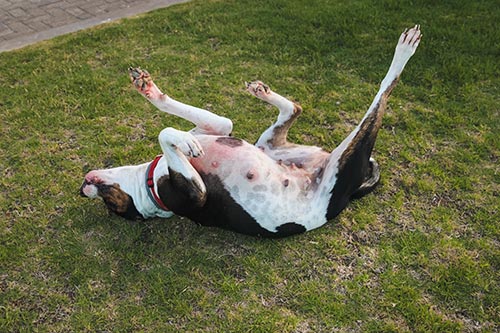
How environmental allergies can damage a dog’s skin
Allergies to substances in the environment (atopy) manifests as red skin and itchiness which leads to self-inflicted skin lesions in dogs. A dog’s immune system can become dysregulated and overreacts to airborne or contact allergens. This overreaction produces skin inflammation in the form of itchiness, redness, and heat.
Pictures of skin issues due to environmental allergies (atopic dermatitis)
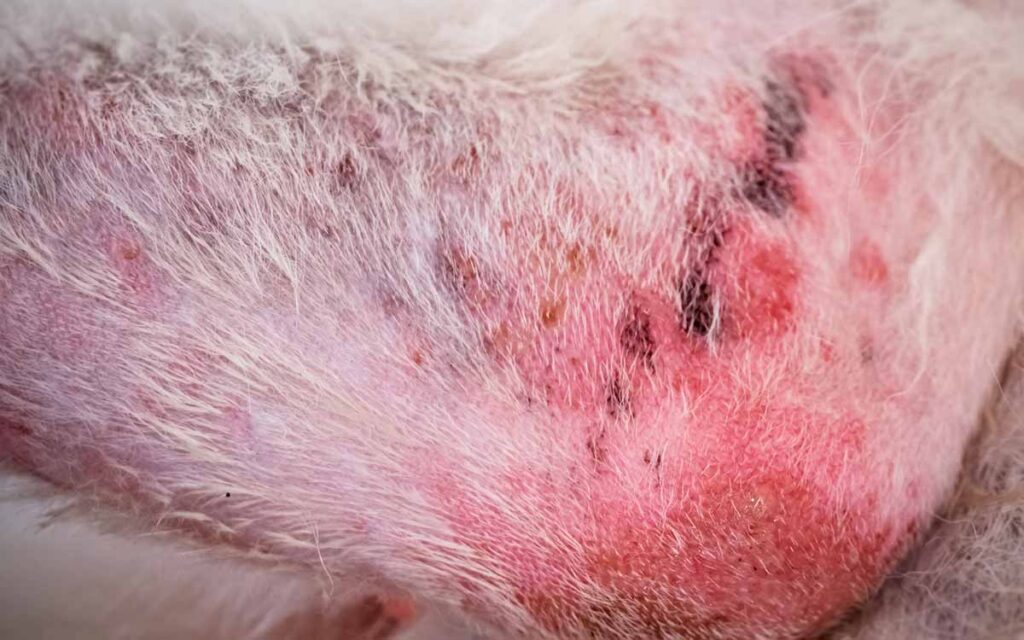
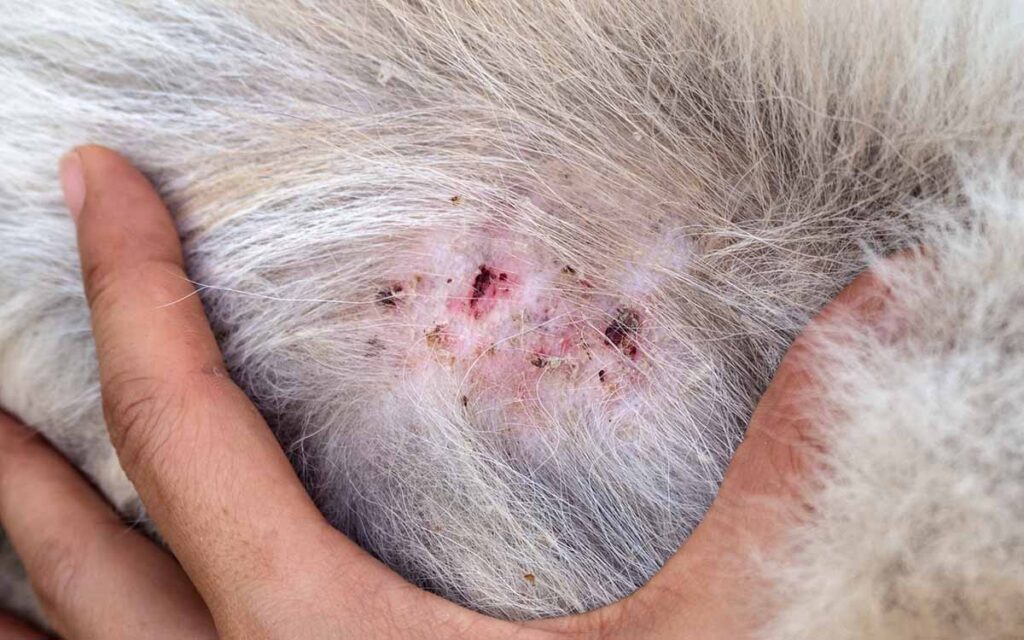
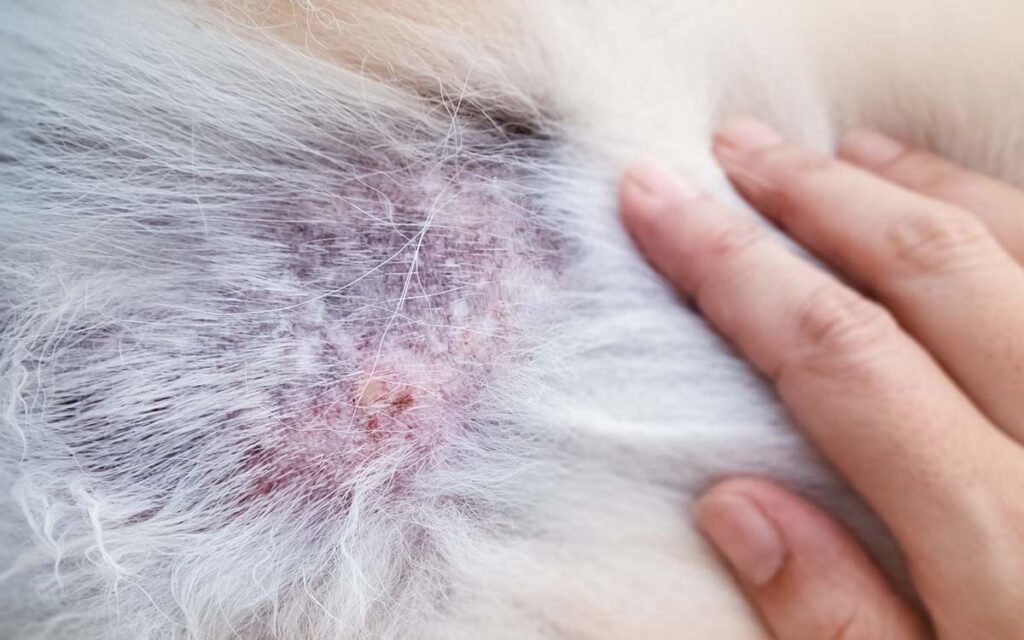
Excessive rubbing and irritation can lead to hair loss and the breakdown of the skin barrier which allows bacteria to overpopulate and cause secondary infections, resulting in further damage to the skin barrier.
You will most often find allergic dermatitis on the lighter-haired parts of the body, such as the paws, belly, groin, and armpit. Pictured below are images showing an environmental allergic reaction on the belly, groin and arm in the same dog (red rash and bumps):


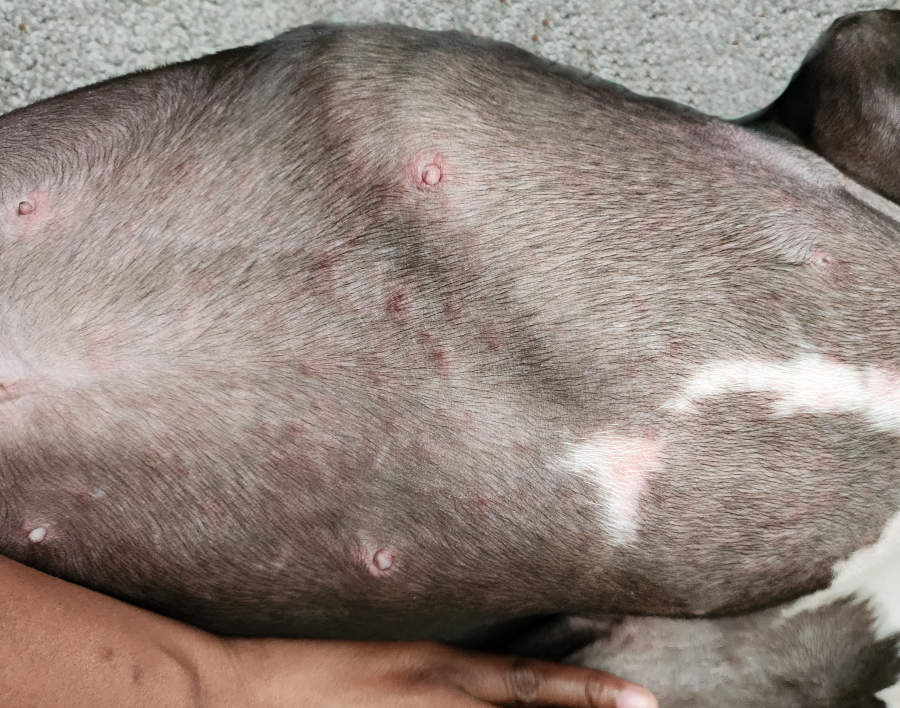
Over time, skin can thicken and undergo a process called ‘lichenification’, whereby it resembles elephant skin. Many of these dogs will have severe yeast infections and a musty smell to their skin.
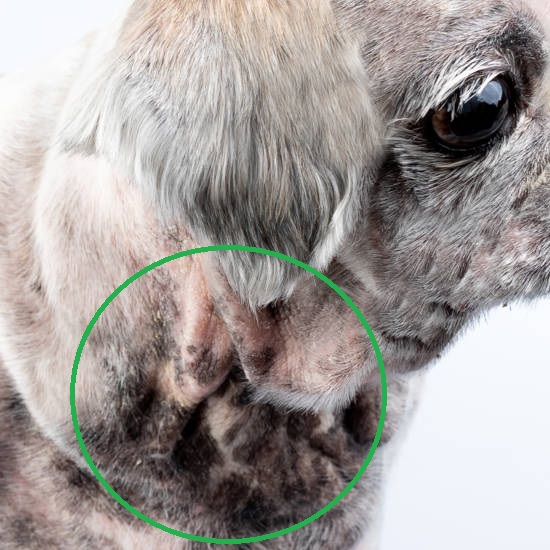
However, it’s important to recognize that there is no specific appearance to the skin and those with environmental allergies can have skin lesions which look the same as those with e.g. a flea dermatitis or food allergies.
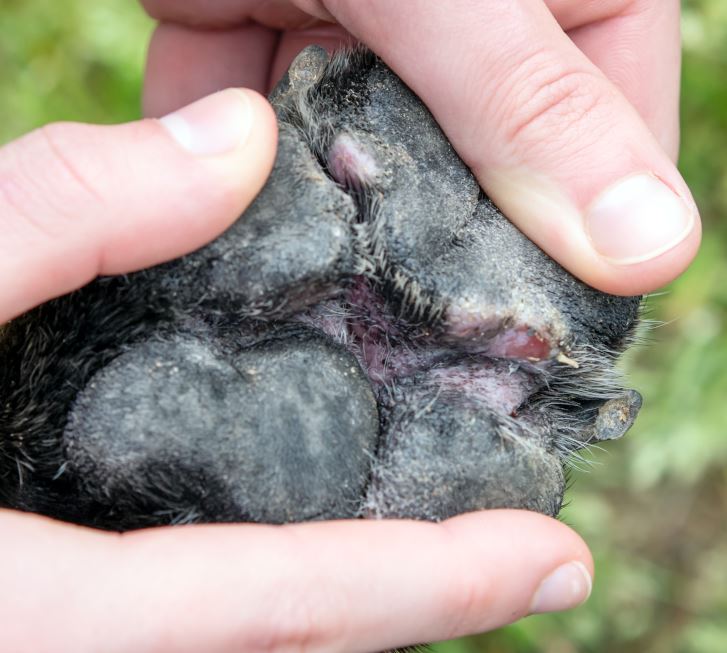
How to recognize that your dog has an environmental allergy
For most dogs, signs will develop between the ages of 6 months and 3 years. Certain purebreds are more prone to atopic skin disease, including the German Shepherd, Labrador, Frenchie, Pug and Westie. However, any breed or cross-breed can be affected.
Some of the more common signs include
- Paw licking
- Generalised itchiness
- Chronic ear infections
- Anal gland disease
- Red skin
- Fur loss
- Secondary skin infections
- Red or watery eyes
- Sneezing
Signs will flare more at certain times of year, when the allergen is more present in the environment.
Differences in symptoms between environmental allergies and other types of allergies
Frustratingly, it can be very difficult to know what is triggering a dog’s skin disease as many of the signs will be similar and the appearance of the skin can be the same, regardless of what is causing the skin disease.
When a dog has environmental allergies, a big ‘clue’ will be that the signs are worst during particular seasons, when the level of allergen is at the highest.
Some dogs will develop signs other than skin disease (such as watery eyes or sneezing) but this is not always the case.
Types of environmental allergies
Different dogs will have different triggers and this is largely determined by genetics as well as the dog’s environment when they are younger. Some of the most common environmental allergies in dogs include:
- grass,
- pollens,
- mold,
- tree and
- dust mites.
Treatment & management of the condition
Atopic dermatitis is best managed using a multimodal approach.
It is important to identify the trigger or triggers and to avoid them when possible. Sometimes, the vet will run blood or intra-dermal skin tests, to identify what the dog reacts to. However, these aren’t always accurate and can be costly. We should wait until after the patient is one year old, to get most accurate results.
These tests are sometimes used to guide immunotherapy. This would be allergy shots that are given regularly, to build a dog’s tolerance in an effort to stop them over-reacting to the allergen.
Atopic disease is managed, not cured. As a vet, this is something I try to make all owners aware of, as it is not realistic to expect signs to disappear forever. Our aim is to minimise flares and keep dogs as comfortable as we can.
Avoidance is usually not effective as a sole approach, but you should still try removing the allergen from the dog’s environment. This can include e.g. hypoallergenic bedding, avoiding certain routes on walks, regular washes and the use of doggy wet wipes on paws after returning home.
As well as this, prescription allergy medications (steroids, cyclosporine, oclacitinib, and lokivetman) will often have to be considered. Many pets are on these long-term.
Skin supplements are also worth giving daily, as they can strengthen the skin barrier, reducing allergen entrance.
Some dogs will need medicated shampoos, which help reduce itching and can also treat secondary bacterial and yeast infections of the skin.
We want to treat the dog as soon as they start to flare, to minimise skin damage and itching. The sooner a flare up is treated, the quicker it will resolve.
As well as controlling the urge to itch, we need to treat any skin infections which are present, which can mean the use of antiboitics as well as medicated washes.
Disclaimer: This website's content is not a substitute for veterinary care. Always consult with your veterinarian for healthcare decisions. Read More.



Be the first to comment